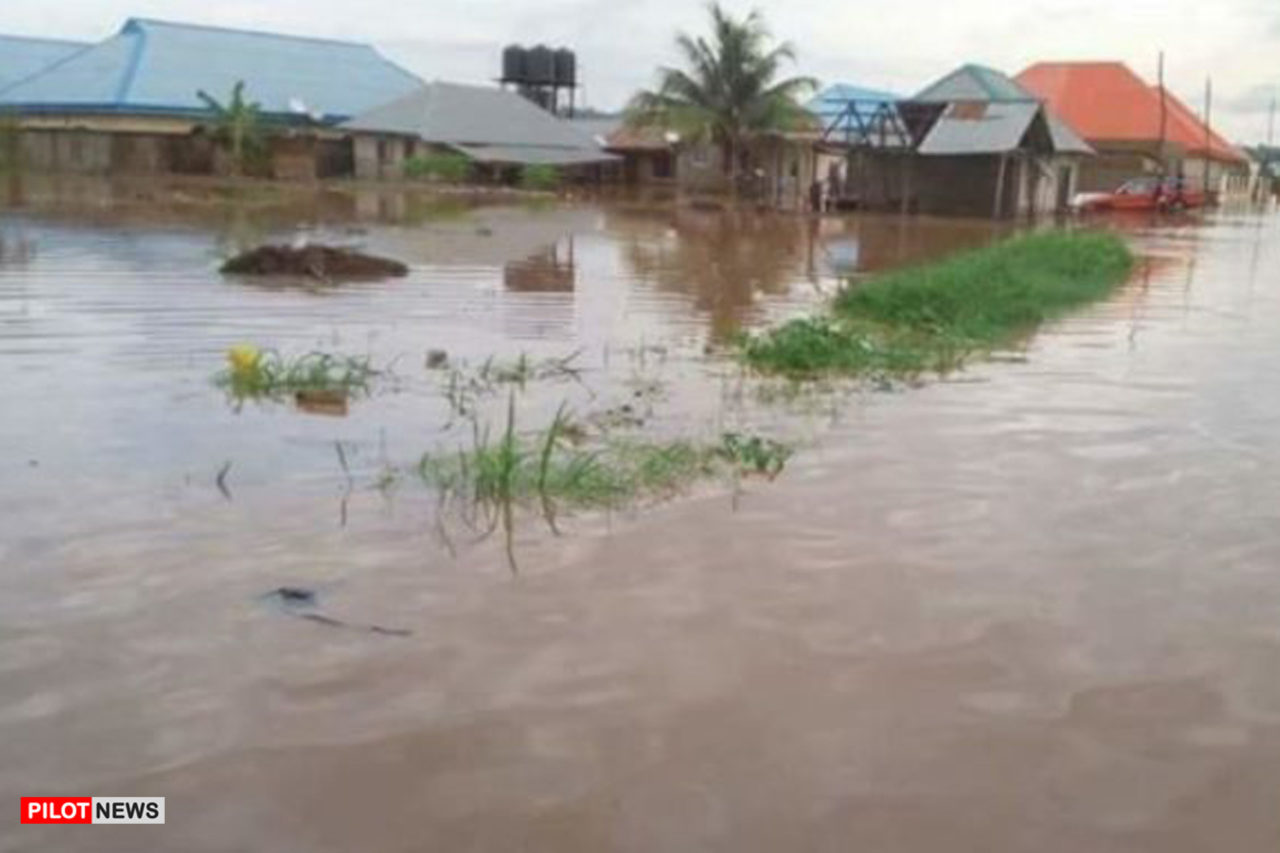Several communities in Nigeria will likely experience the yearly flooding cycle which destroys life and property and devastates the environment.
The minister of water resources, Prof. Joseph Utsev, disclosed this on Thursday in Abuja when he unveiled the 2025 Annual Flood Outlook (AFO) prepared by the Nigeria Hydrological Services Agency (NIHSA).
The high flood-risk states are Abia, Adamawa, Akwa Ibom, Anambra, Bauchi, Bayelsa, Benue, Borno, Cross-River, Delta, Ebonyi, Edo, Gombe, Imo, Jigawa, Kebbi, Kogi, Kwara, Lagos, Nasarawa, Niger, Ogun, Ondo, Osun, Oyo, Rivers, Sokoto, Taraba, Yobe, Zamfara and the FCT.
Similarly, no fewer than 176 local government areas (LGAs), comprising 1,249 in 30 states and the Federal Capital Territory (FCT) fall within the high flood risk areas, while 2,187 communities in 293 LGAs in 36 states of the federation and the FCT fall within the moderate flood risk areas in 2025.
The Annual Flood Outlook 2025 was unveiled with the theme “Flood Resilience: Focusing on Communities Preparedness and Adaptive Strategies for Flood Management.”
Utsav said 666 communities in 52 LGAs in 14 states fall within the high flood risk areas in April, May, and June; 549 communities in 114 LGAs in 30 states in July, August, and September; and 489 communities in 56 LGAs in 13 states in October and November 2025 are within the High Flood Risk zones.
The Minister also said moderate impact level floods are expected in 445 communities in 116 LGAs in 24 states during April, May, and June; 1,458 communities in 271 LGAs in 33 states during July, August, and September; and 1,473 communities in 171 LGAs in 26 states during October and November 2025.
The minister noted that flooding remains one of Nigeria’s most devastating natural disasters, and climate change was accelerating its frequency and severity.
“Flash and urban flooding are projected in several cities in the country due to high rainfall intensities, low attention to water facility management, including drainage systems and waterways, and a lack of flood resilience structures.
“The 2025 Annual Flood Outlook (AFO) has been segmented into three parts to address the pressing challenges of flood disasters and provide detailed information for mitigation, particularly in the most vulnerable communities.
“The three publications are: Flood Forecast, which gives an overview of the 2025 flood scenarios; Flood Risk Communication, a document that exposes the necessary communication modes for translating flood occurrence into action; and Flood Mitigation and Adaptation, which summarises the required activities, measures, and programmes to be undertaken to reduce exposures to flood risks,” Utev said.
In a remark, the Permanent Secretary of the Federal Ministry of Water Resources and Sanitation, Richard Pheelangwah, urged stakeholders to prioritize early response, saying, “This outlook isn’t just about numbers; it’s about protecting lives and livelihoods.”
On his part, the director general and chief executive officer of Nigeria Hydrological Services Agency (NIHSA), Umar Ibrahim Mohammed, noted that this year’s flood forecast goes beyond mapping LGAs to identify specific at-risk communities.
“Our focus has expanded to assess sectoral impacts on health, education, agriculture, and infrastructure, offering more robust tools to policymakers and disaster risk managers.”
“AFO’s enhanced methodology has resulted from continuous feedback, technological advancement, and broad inter-agency collaboration.
“We are transforming flood data into real-time decisions and impactful resilience-building,” he said.
- Pharmacy Council of Nigeria Seals 498 Drug Shops In Lagos - October 25, 2025
- Boko Haran Insurgents Use Drones To Launch Attacks – Zulum - October 25, 2025
- Over 150 Persons Infected With Skin Disease In Adamawa - October 25, 2025

